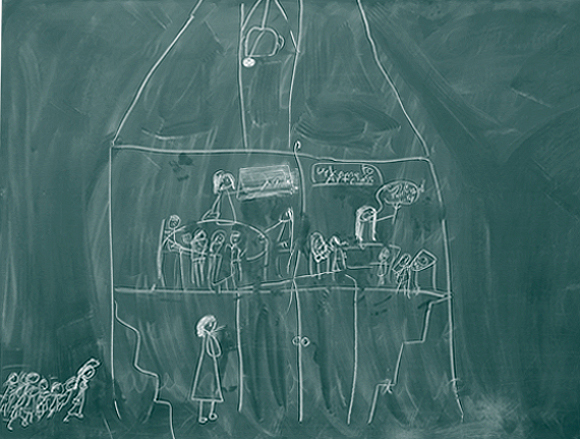
DSA/Schoolhouse is an institution. Founded nearly eighty years ago after the Long Beach earthquake, DSA (Division of the State Architect) has set safety standards, provided plan and field review, and provided for a stock of public school buildings today, in which basic health and safety are taken for granted by parents, school administrators, architects, and engineers. Little has changed with regard to the DSA process in the last eighty years, with the exception that today the volume of school construction in California is at unprecedented and historic levels. This volume causes challenges for DSA, frustration for architects and school districts, and delays, which of course cost money.
Now, a couple of “radical” ideas have resulted in a strategic plan for DSA that is changing how we do business. The first is the idea that school districts are our public agency partners in delivering safe, accessible, and healthy schools. The second is the idea that the process of designing and building good schools is a collaborative, shared responsibility, requiring good communication and better data to succeed. DSA now has a vision and a mission like any other organization.
The objectives of the first strategic plan adopted in 2001 include:
- Respond to customer and stakeholder business imperatives by providing responsive, accurate, prompt, and value-added service.
- Develop and implement improvements, innovations, and technology that ensure internal processes and systems are fast, effective, customer friendly, and responsive to changing needs.
- Implement systems, procedures, and practices that encourage high morale, highly developed core competencies, and fully trained employees and technical consultants at every level.
- Working collaboratively with stakeholders, enhance program planning and building design to ensure that public schools and state buildings are high performing and produce a positive architectural legacy.
- Be a proactive leader in writing legislation, codes, and policies that promote the principles of universal design and Excellence in Public Schools and Public Buildings.
Much remains to be done; indeed any organization must be focused on continuous improvement. Nonetheless, DSA has created a very effective advisory group made up of stakeholders from all segments of industry and the school districts. We have focused on creating effective partnerships with school districts. We have rolled out, with more to come, technology solutions that will lead ultimately to a fully on-line submittal, review, and approval process. We continue to develop more robust training programs for DSA staff, consultants, and the industry. The access compliance program has become the Office of Universal Design, and we are well on our way to success in certifying California’s access codes with federal standards. The Excellence in Public Buildings program has become department policy, resulting in sustainable and higher performing public buildings and schools.
We are joined in this effort by numerous state agencies through the Collaborative for High Performance Schools, and the DSA website for Sustainable Schools has become a valued resource for architects and school districts as they implement their school construction programs. Over a dozen school districts in California have adopted these standards to date. Lastly, DSA has created two distinct branches, one focusing on regional operations and the other on codes, standards, and policy. With this reorganization we have begun to provide the leadership called for in the strategic objective.
More recently, we have renewed our commitment to the strategic plan and adopted a set of guiding values. DSA values include a commitment to consistency and expertise. They include a commitment to keep our promises, and to provide leadership.
In the next few years we will be focusing on:
Developing consistency through standards.
Improving and expanding training.
Assuring that adequate resources are in place.
Developing performance measurement systems.
Creating more collaborative mechanisms.
Improving and expanding communication and recognition.
Much remains to be done, but our shared goal is successful children, whose learning is improved with better facilities.
Author Stephan Castellanos, FAIA, served until recently as California State Architect. He is the incoming President of the AIA California Council.
Originally published in 4th quarter 2004, in arcCA 04.4, “School Daze.”





